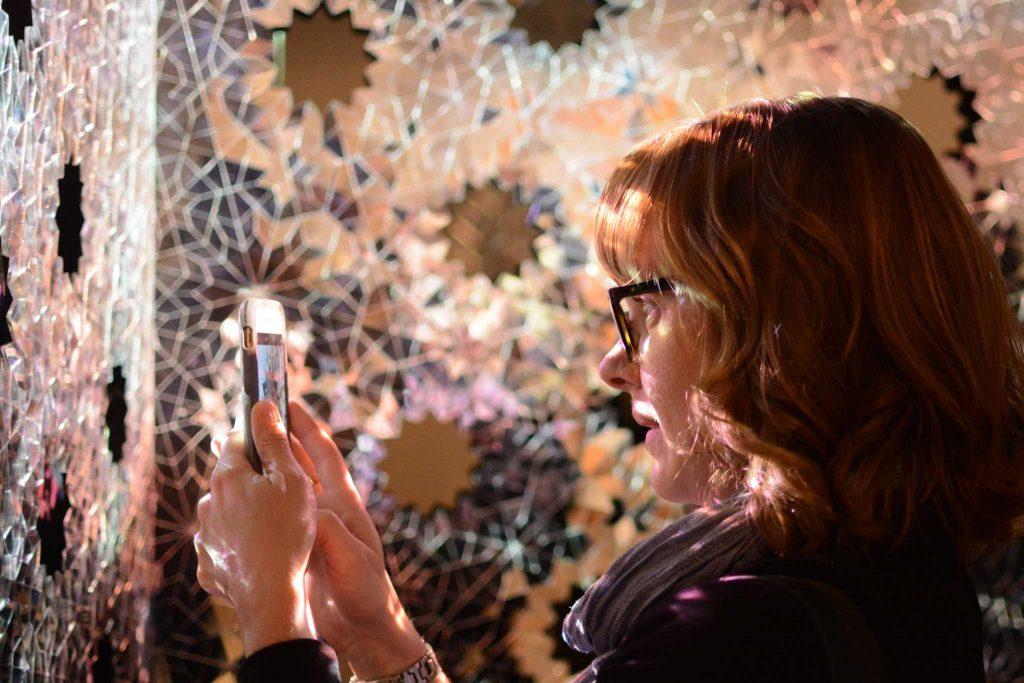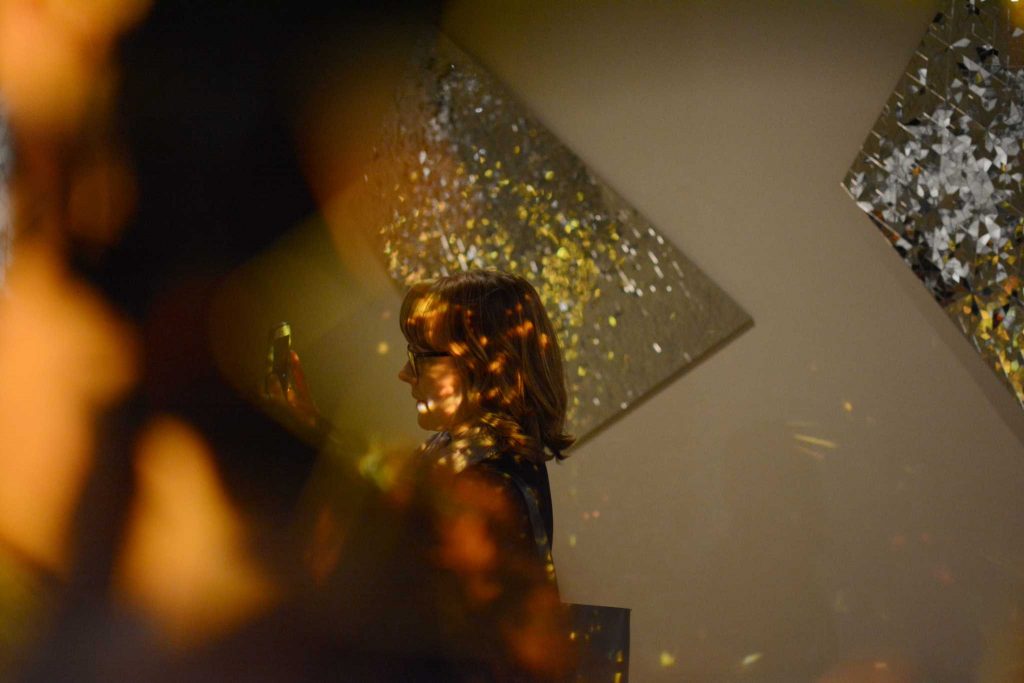SF State’s Fine Arts Gallery held a reception on Saturday for the opening of its new exhibit “Mashrabiya: The Art of Looking Back,” which features art with a contemporary Middle Eastern perspective.
Kathy Zarur, art historian and a curator of the exhibit, said the idea of having a Middle Eastern exhibit has been in conversation for years. She said thematically and formally it’s a strong exhibition given today’s political climate.
“I think it’s very important to learn about the perspectives and experiences of artists in the Middle East who live in California,” Zarur said. “We are a part of the American fabric.”
Because she feels the Middle East is a target of the American administration, Zarur believes it is important to learn about other artist’s perspectives from the region.
“I think it’s important, as the title of the exhibition says, to look back and see that we’re no different,” Zarur said. “We come from different places, but so does everyone in the country — we all come from different places.”
Zarur wants people to be enriched with the extensive variety of cultures and religions from the Middle East while setting their eyes on the exhibit.
Mashrabiya, as referred to in the show’s title, is a traditional Middle Eastern architectural technique.
“The mashrabiya is a window screen that provides privacy for the people inside, but also allows air and light to pass through, and allows people on the inside to look at what’s going on on the outside without being watched,” Zarur said.
Sanaz Mazinani, a featured artist, included her piece called “Threshold,” which is an installation that is separated by black veils and white walls from the rest of the gallery.
It includes moving kaleidoscope video lights, sound composition and geometrically patterned mirrors that reflect lighting. Mazinani said she wants her work to provide a place for contemplation and thought, particularly around the Middle Eastern culture.
“The politics of Donald Trump are really threatening what America is all about in terms of the cultural overlaps and diversity,” Mazinani said. “Having an exhibition like this is really important because it allows us to know more about each other, learn more about each other’s culture and appreciate one another more, so we can continue to share instead of feel fear for no reason at all.”
Students of Art 619 Exhibition Design put the gallery together themselves. Their professor, Mark Johnson, oversaw the installation and is proud that SF State has the opportunity to provide such an inspiring perspective on California artists who trace their ancestry back to the Middle East during such a difficult time.
Johnson is also very proud of what his students accomplished with their first exhibition of the semester.
“The students do all the work,” Johnson said. “This is a case where literally their hand is on everything you see — the wall labels, the layout, the signage, the building of these cases, [installing] all the work that’s on the wall.”
One of Jonson’s students, Ewart Bungo Jr., said their class ran into some trouble at the end of the installation, but were successful in the end.
“We pulled it together yesterday,” Bungo said. “We were on the edge of not completing it, but now that it’s complete … it was just magic,”
SF State Alumni and featured artist, Ala Ebtekar, believes it’s more important than ever to have this exhibition, especially in a public space with easy access. He hopes viewers take the time to pause and reflect on the message of all the works in the gallery.
“A lot of this work comes with a little bit of duration, in a sense that you have to sit with it, and experience it,” Ebtekar said. “We’re all trying to do a little to show another glimpse of another part of the world.”
Kathryn Kim, who is currently taking a class at SF State focused on the art and architecture of Islam, said she’s learned the mashrabiya was used to protect women’s privacy. She feels the pieces in the exhibit add the artists’ perspectives to what she learned in class.
“In some pieces, it’s almost as if you’re looking from the outside in, and in others it’s like you’re looking from the inside out,” Kim said.








